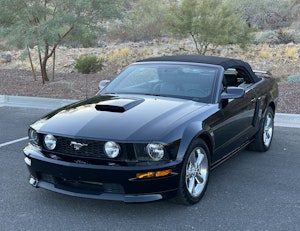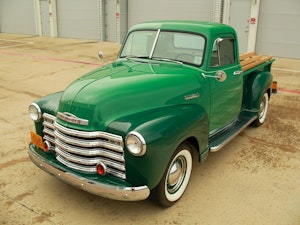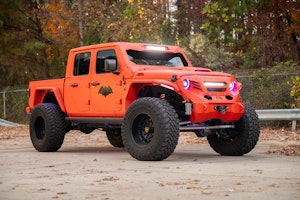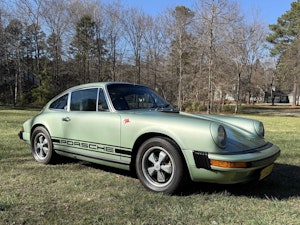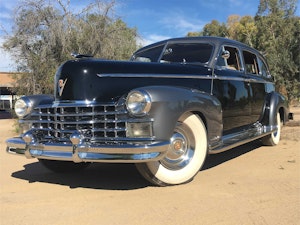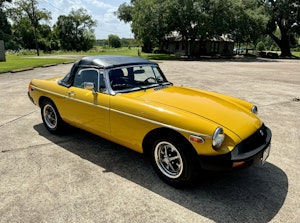Five Under Five Grand: Collectible cars you can afford
The profusion of televised auctions like Barrett-Jackson and Mecum — where fifty grand is chump change — seems to have placed a giant “keep out” sign in the minds of would-be car collectors of modest means. Yet every day Craigslist and eBay Classifieds are full of entry-level vintage cars that are interesting potential weekend cruisers. Here are some of our favorite “credit card cars” that can be found in perfectly usable shape for less than the limit of the average VISA.
- 1979-82 Fiat Spider 2000: Fiat’s back in the U.S. with the new 500, and it seems like a good time to plumb the back catalog of cars it sold in the U.S. prior to saying, “Arrivederci, America” in 1983. The Spider 2000 was the last iteration of the lovely Pininfarina-designed Spider that dated back to 1966. The final version came with fuel injection, relatively plush interiors with a genuine wood dash and one of the best convertible tops ever (undo two latches and throw it over your shoulder at a stop sign). Look out for body rust, tired smoky engines and worn out 2nd gears.
- 1987-93 Ford Mustang 5.0: OK, it’s not the classic 1964½-1970 model, but neither is it the “malaise-era” Pinto-based Mustang II of 1974-78. The forgotten Ford Fairmont donated its competent underpinnings to the “Fox” platform Mustang, the longest-running iteration of the original pony car. The 1987 5.0-liter V-8 Mustang announced that the U.S. auto industry had finally awakened from its 13-year coma with a conservatively rated 225 hp that let enthusiasts know that Ford hadn’t completely forgotten the Cobra-Jet days. Convertible GT and LX cars are getting pricey, but the notchback and hatchback coupes can still be had reasonably if you look hard enough. Rust, poor collision repair and bad Ricky Bobby modifications are always a concern. Look hard for a well-kept stock example.
Click here to learn the value of your car for free using Hagerty Valuation Tools.
- 1975-78 Datsun 280Z: The Datsun 240Z changed Americans’ perceptions of Japanese cars for good by offering Porsche 911 performance for half the money. Emission laws blunted the car’s performance and new bumper laws meant that by 1975 — when the car became known as the 280Z — it sported a pair of battering rams front and back. It wasn’t all bad. The addition of fuel injection brought back the performance of the original 240Z which seemed a fair trade for the freakishly large bumpers. If you can look past those, the 280Z is a handsome, reliable and decent-performing sports car. As always, outside of the West Coast, rust is a big problem. Of all the cars on the list, it’s the one to buy sooner rather than later. Nice sub-five grand examples are getting tough to find.
- 1988 Pontiac Fiero: The General Motors of old was famous for employing customers as “unpaid research and development consultants.” Witness the string of underdeveloped models like the Chevy Vega, the 1984 Corvette and the Cadillac Allante that GM pushed out before they were fully baked. Often, just as GM finally got a car right, they whacked it. The sporty mid-engine two-seat Pontiac Fiero was a prime example of this approach. Originally floated as a “commuter car,” it had sports-car looks that the chassis and low-power four-cylinder engine couldn’t deliver on. By 1988, Pontiac had remedied everything — the Fiero had great looks, a powerful V-6 and a new suspension designed by guys who had paid attention to what Lotus was doing in its high-dollar sports cars. Forecasting a drop in demand for two-seaters that didn’t happen, GM killed its by then very competent sports car after the 1988 model year. The last year V-6 GT is the one to seek out. Beware of overheating engines from damage to the fragile cooling pipes that run underneath the car.
- 1960-63 Ford Falcon sedan: The Falcon was Ford’s first attempt to field a compact car to stem the flow of European imports. The nameplate lasted until 1970 but the first generation of cars was arguably the most attractive. They’re sturdy and attractive little cars that were offered in body styles as diverse as a convertible and a compact pickup. Virtually all of these with the exception of the humble four-door sedan have appreciated beyond our self-imposed five grand limit. Sadly, although the cheapest to acquire, the sedans seem to have a relatively low survivorship rate.
Rob Sass is the author of “Ran When Parked – Advice and Adventures from the Affordable Underbelly of Car Collecting.”
Marketplace
Buy and sell classics with confidence



